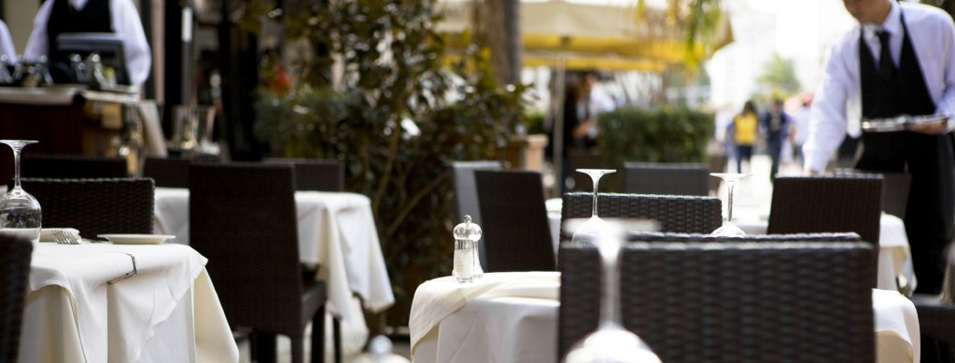Putting Your Plan Together (Part 2)
In my last blog I spoke about setting yourself up with a solid team strategy, including identifying the specific skills that an opening manager must possess. In this blog I want to outline how to organize your team to develop training materials and a program to prepare your staff for a successful opening.
Communication
While I did address this in my first blog I wanted to elaborate on this a bit more because it’s so important. Not just communicating, but how you communicate is crucial. From the moment you hire your first manager through the opening, regular, consistent communication will be key to your success. All too often I see emails being solely used for project management. Emails are important communication tools but can create inbox overload. On the first day of a recent project I received 50 emails from various departments in the parent company! Email mentality developed where senior management used emails like a game of tag – “I sent you an email so now it’s on you.” It was clear to me that the organization had a culture with a lack of accountability and way too much finger pointing. For the restaurant to succeed, the smaller team had to abandon that dysfunctional culture and develop one of its own – based on open communication and teamwork.
I am a big proponent of frequent discussions. I try to avoid calling them meetings. It sounds so traditional. This is not just for communication and progress reports but also for brain storming, enhancing the creative process, problem solving and team building. It’s important that someone take notes, and include clear task assignments and target dates for completion. The notes should be circulated as soon as possible after the meeting and reviewed at the beginning of the next meeting. The management team can use this to monitor daily progress. If someone on the team is having trouble, assign others to help. Don’t let them flounder and avoid being openly critical. If someone needs to be spoken to because they are having difficulty staying on task, talk to them in private. I learned the adage long ago: praise publicly, correct privately. It still makes sense.
Develop a pre-opening schedule
As far out as possible create a preopening schedule. There are a number of software applications that can help with this. This should include target dates for training materials and document completion, delivery of equipment including china, glassware, flatware and kitchen small-ware. Include benchmarks for partial completion of major tasks. Don’t forget other systems like HR documents, setting up the back office, employment ads, screening and hiring staff. Be generous with time allotments. Remember to include FOH systems being brought on line, including phones, POS, reservations systems, web site and music. This helps managers to coordinate POS and reservation systems training with staff. Vendor support personnel who need be on site assisting with systems training also need to be scheduled in advanced. Remember that screening staff is also very time consuming. Be sure to include an actual training schedule as part of this.
The key to the training schedule is to assign each manager to specific areas of training. Distribute the work evenly so each manager focuses on his or her strengths and can prepare accordingly. It also allows each manager down time so they can recharge and focus on other aspects of the opening. The training schedule helps them plan ahead.
The overall schedule should also include basic target dates for construction completion (gas turn on, furniture delivery, etc.). Knowing when you are getting your tabletop equipment puts into perspective that you need to have the operation clean and dust free, enforcing a sense of urgency. The schedule should run for at least one month after the opening. Allow for follow-up training and staff communication meetings during friends and family as well as after the public opening.
Organize you team
When you task your management team with specific areas of training, base it on the organizational chart developed prior to hiring managers. This should be consistent with their individual job descriptions. As the leader of this process, whether you are the general manager, chef or owner, it will be your responsibility to guide your team to success. It’s also important to schedule one-on-one face time with each manager in the team. Check in with them frequently, daily if possible. Let then know in advance that you will have time for them. This helps them and you by lowering the frustration level all around. They know when they will get your attention. You won’t get bombarded with constant interruptions and questions. Part of their growth as managers means they will need to be groomed to know it’s OK to bypass a task they may be stuck on because it needs your attention. They should know it is fine to move onto other tasks until they get face time with you.
Of course, restaurant openings don’t happen in a vacuum and the time will come where this may not always be possible.
Identify the structure of training materials
When building training materials develop an outline with the team. Does there need to be separate manuals for reservations, bar and dining room? Which job positions are covered in each? The complexity and detail of these depends on the level of service your operation will require. I suggest you write a simple list of tasks for each job. For example:
Server Assistant / Fine Dining:
- Serve water
- Serve bread
- Clear a course
- Clear after the entrée
- Reset a table
- Clear and reset a table after the guest’s departure
- Serve coffee
- Server tea
This is a very basic example, and in a fine dining venue many more tasks should be added. Don’t forget to include guest interaction such as directing / escorting a guest to the rest room, making way for a guest, pulling out their chair, initial table greeting, etc. In fine dining even these tasks need to be defined and detailed. Once your outline is complete, then proceed to write each. They can be simple bullet points or detailed descriptions, depending on the service level of the venue.
As the team leader, develop a template or format for each standard. This should include the job position, task and standard name. It is also best to organize your training chronologically in order of service. It is also important to include why the standard should be performed following management’s method. Reinforce the guest impact. Don’t just dictate that you want bread served a certain way. Explain why. Is it better for the customer? Is it about consistency, efficiency or a combination of some or all of these factors?
Lastly, spend time teaching your team to discuss how to write standards in a way that can clearly be communicated to line staff. The person reading the material needs to be able to get a clear picture of what you are trying to communicate. If they can’t, you need to do a better job presenting it. I like to insert pictures. Pictures can be worth a thousand words!
It never ends
Besides service training, remember station charts, side-work and opening / closing check lists. And don’t forget to think about tea and coffee training as well as other areas of beverage training including cocktails, wine by the glass, beer and general spirits. These areas tend to get forgotten or merely glanced over. In some situations, you will need to rely on that good imagination to develop these before the restaurant is physically open. As I mentioned earlier you will also need to revise them after opening. But take your best shot at this. It will pay off in the long run.



